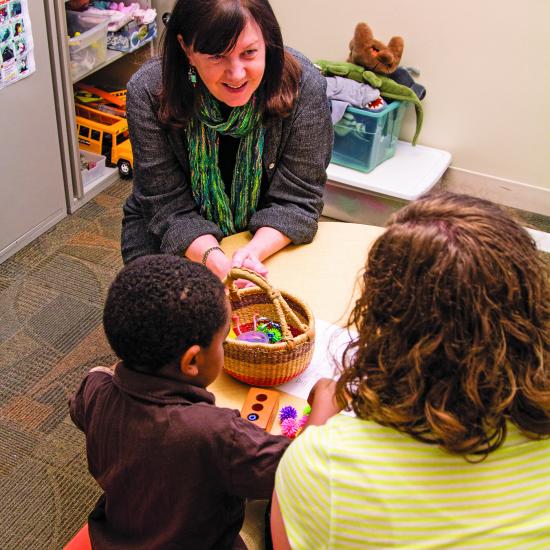The Body Keeps Score: Early Childhood Trauma
It was almost always scary when Lucy’s daddy came to visit her mama. But when his eyes were red and he smelled funny and talked loud, that’s when there was real trouble. Sometimes he hit mama or threw things. Sometimes the police came; big men with guns and loud voices. They were scary too. They came last night. The lights from their cars reflected on the ceiling of the apartment, red, blue, red, blue. There was red on the walls too, and red where daddy was lying on the floor. Mama knelt next to him, rocking back and forth, crying and crying. Big sister, Brandy, was in the other room, hiding under the bed.
But there’s nothing Lucy can do. Lucy is only 1 year old.
The body keeps score
Almost 20 years ago, Dr. Bessel van der Kolk of the Harvard Medical School proposed that “the body keeps the score” to describe how trauma creates changes in the brain’s wiring, leading to difficulties in identifying and talking about experiences. When infants like Lucy experience terrifying events, traumatic memories are stored in what neuroscientists call implicit memory, sometimes referred to as “body memory” which is different than explicit or “conscious memory.” There is no language involved in implicit memory, only sights, sounds, smells, touch, images that can later on trigger intense fear in certain situations or environments that are reminiscent of earlier trauma.
Because very young children haven’t yet developed language at the time the trauma occurs, they aren’t able to tell us about it in words. Instead, it is expressed in behavior. You’ve heard the term “fight, flight or freeze”? Very young children aren’t able to fight or flee, so their response is most often to “freeze” emotionally. However, long-term use of this survival strategy comes at great cost, including chronic physical complaints, depression and other mental health disorders, difficulty with relationships, and problems with focus, attention and learning in school.
So, what help is there for children like Lucy?
We know that the family plays a key role in determining how the young child experiences and recovers from trauma. If parents are attuned to their children’s emotional needs and cues and can respond in a supportive way, it is much more likely that children will learn to cope with their experiences and be happy at home and successful in school. However, when parents have their own childhood histories of loss and/or trauma, and struggle with other adversities such as racism, mental illness, poverty, social isolation, community violence or chemical use, it becomes much more challenging.
Hope for healing
At Wilder, we work with children like Lucy every day. They are usually older, the traumas they’ve experienced might be different, but they come to us and we draw on our years of experience and our clinical skill to help them (and their families) to heal.
Recognizing that there aren’t enough therapists in Minnesota who work with children under the age of 5, the Children’s Mental Health Division of the Minnesota Department of Human Services provided funding for licensed mental health professionals from around the state to complete a three-year certification program that provides advanced level training in infant and early childhood mental health. Two Wilder therapists have completed the certification and two more will complete the process by June 2015.
As part of the program, clinicians are trained in Trauma-Informed Child-Parent Psychotherapy (TI-CPP). TI-CPP is an empirically supported, relationship-based treatment for children age birth to 6 years who have experienced at least one traumatic event and are experiencing attachment, behavior and/or other mental health problems as a result. The main goal of TI-CPP is to support and strengthen the relationship between child and parent (or caregiver) as a way to restore the child’s sense of safety and attachment and improve the child’s cognitive, behavioral and social functioning.
Next time
“Well,” you say, “that makes sense. But how do they do that with babies? Put them on little couches and ask them to talk about their feelings?” No, we don’t do that. In an upcoming post, “Ghosts and Angels in the Nursery,” I’ll talk about how Wilder works with young children and their caregivers to begin the healing process.
Gael Thompson, MSW, LICSW, is the Early Childhood Intervention Program Coordinator for Wilder’s Child Guidance Clinic.
